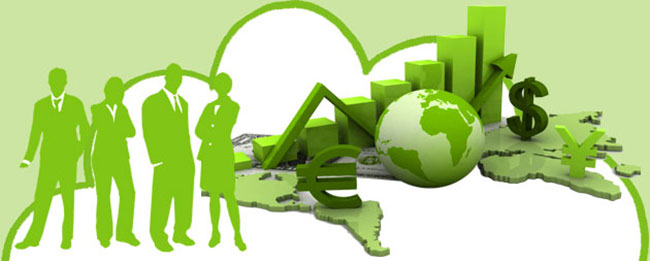At one time, companies measured growth strictly in terms of monetary value. However, as we become more aware of our own impact on the world around us, more businesses are beginning to realize that they need to include environmental costs into their financial reports. In the last several years, green accounting has shown that incorporating social and environmental costs can help sustainability.
Improving the Balance Sheet
Before green accounting, the balance sheet simply reflected a loss or profit without factoring in outside elements. In green accounting, such outside elements like depletion of resources, health issues for workers, pollution, or even savings from using new technology are taken into consideration. Additionally, green accounting allows companies to calculate their costs at every stage their product goes through. They know how much it takes to get the raw materials, the impact of producing the materials to into the product, the cost of distributing that product, and the final impact of disposing of the product. With this information, companies are making better decisions that will increase sustainability and profitability.
Changing the Use of Gross Domestic Product
Over the last 60 years, gross domestic product (GDP) was the main indicator of the health of national and state economies. However, critics often argued that GDP was never supposed to be used this way, and it’s a poor measurement tool. Their main argument was that GDP was only concerned with what an economy produces, regardless of the effect on people or their environment. They stated that if production leads to a sick workforce or depleted environment, then obviously the economy isn’t healthy at all. Instead, proponents of green accounting say that by showing the exact costs that production will have on everything around it, policymakers will have a much clearer idea of just how healthy or weak an economy truly is.
Changing Accounting Standards
Accounting is a field with ever-changing standards. After the stock market crash in 1929 lead to the Great Depression, the government stepped in and created the Securities Act of 1933. This, along with the Securities Exchange Act of 1934, created the current Securities and Exchange Commission (SEC) to regulate the securities industry. Then, the Financial Accounting Standards Board (FASB) was created in 1973 to form financial reporting standards for protecting the public and investors. As green accounting ideas continued to grow, the need for new standards was soon realized. In 2011, the Sustainability Accounting Standards Board (SASB) was created to help set up standards for green accounting. Their goal is to create standards for 80 industries in 10 different sectors and help companies improve their social and environmental impact.
Green Accounting in Use
While green accounting may seem like a large undertaking, there are already companies out there that have started using this practice to help consumers understand more about the products they’re purchasing. Tesco, a British supermarket, prints carbon footprints on its packages right next to the calorie count. With this information, consumers not only know how that package of cookies will affect their waistlines, they’ll also know how making those cookies affected their environment. Additionally, aVOID, a new browser plug-in, warns shoppers if the product they’re about to buy used child labor. Their goal is to steer shoppers toward more socially ethical products.
Making Green Accounting Routine
While changing the way accountants and companies think about green accounting and sustainability is a slow process, organizations like SASB hope that new standards and a better understanding of the impact that production has on social and environmental issues will lead to an overhaul of accounting practices. Through their work, it might be possible that one day, assigning a dollar value to our natural resources will be as commonplace as using Ria for money transfers. Then, companies can create more ethical and economical production policies.
By using green accounting, companies can see social and environmental costs that aren’t always visible using regular accounting methods. With this information, they may often see opportunities where they can cut waste, prevent pollution, and ultimately produce a product that is better for the environment and the bottom line.